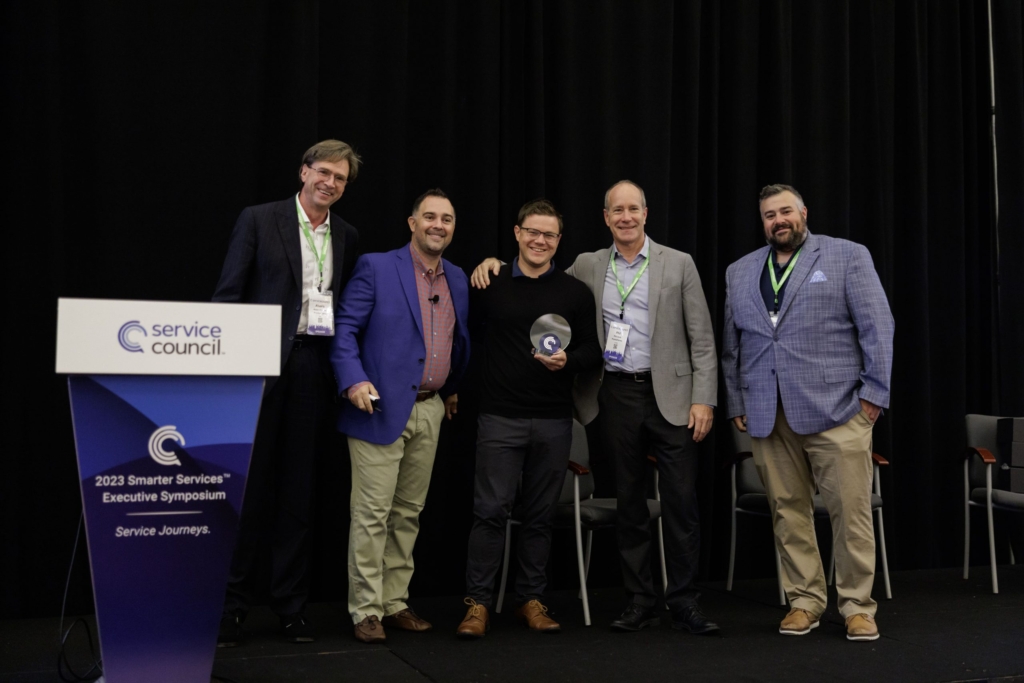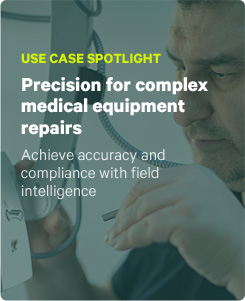A review of field service insights from Service Council 2023
Imagine a room buzzing with service industry leaders, all on the bleeding edge of innovation, eager to shape the future with field service insights. That’s precisely the atmosphere at the Service Council Executive Symposium in Chicago. The annual event, hosted by the field service trade association Service Council, is where these thought leaders convene to discuss the pressing trends impacting their businesses today. They exchange best practices, dive deep into the intricacies of their trade, and, most importantly, explore the potential of technology for transforming field service.
The event focused on three key elements in field service: people, process, and technology. As I take you through my experience of the event, try to view these topics from the perspective of your technicians, organization, and yourself as a leader.
People
By far, “people” was the most top-of-mind topic for these service leaders, with process and technology coming as a consequence of the teams they ultimately serve. In fact, according to the Service Council, the top concern for service leaders today is talent attraction and retention. At the show, everyone was eagerly seeking out advice and best practices to gain an edge in this area. The idea of waiting for the right technician was prevalent across many sessions, but it was equally cautioned by the notion that you can’t find, engage, and retain the right technician if you don’t consider their realities.
Solving the paperwork dilemma
Administrative work is inextricable from field service. You need this for your business, your customers’ records, and any regulatory audits. However, it’s also the least favorite part of your technicians’ day (as found by Service Council research). Businesses are caught in a dilemma between serving their needs and those of their field teams. The way to break out of this false dichotomy is to reframe from impossible choice to natural consequence. A technician-centric approach gives them the most intuitive way to gather data without getting in the way of work. From there, technology that adapts to the nuances of technician workflows, experience, and abilities can further elevate recordkeeping.
ProntoForms (now TrueContext) presented a Solution Showcase at this year’s Symposium and won the “Most Viable Technology” award for demonstrating a practicable approach to solving the paperwork dilemma.

Alvaro Pombo (Founder & co-CEO, ProntoForms), John Carroll (CEO, Service Council), Mike Simpkin (Marketing Manager, ProntoForms), Phil Deck (co-CEO, ProntoForms), Greg D’Andrea (CRO, Service Council) at 2023 Smarter Services Executive Symposium
The same pond will yield the same fish
Roy Dockery, VP of Field Operations for Flock Safety, introduced the conference to a new term, “Colorful Homogeneity.” This describes how many organizations have people who look different but think the same, sacrificing diversity of thought. When searching for new talent, Dockery recommends keeping this idea front and center. If you aren’t intentionally giving attention to your environment (culture and recruiting), you won’t achieve true diversity. Ensure your recruiting process allows you access to new ponds and that your culture allows those new fish to survive and thrive.
Raving employees create raving customers
“Your customers will never be a bigger fan than your team members.” This is a quote that I’ve heard from many different sources, including the show. How do you engage your team members? Do they feel heard and represented? Technicians are your conduit to customers, and if their day-to-day is one that doesn’t meet their expectations, their engagement and satisfaction will suffer, and so will your CSAT. People-centric processes and technology can help smooth issues, but they are not the cure to a larger company culture problem. How are you asking your technicians, “Are you contributing in a way that’s meaningful to you?” How you address their response will dictate the culture you have.
Process
It was made abundantly clear throughout the conference that without the right people, service organizations can’t expect to meet their increasing service demands, which are projected to double by 2028. If your teams don’t have the processes that allow them to do their best work, you will fall short of meeting this demand. Throughout the week, industry leaders spoke about strategies they take into consideration when creating optimal processes for their teams.
Vision-led process
Creating a fundamental vision for your service operations and using it as your true north for all processes is critical to success. This means looking inward to establish a vision that is appropriately sized and realistic for your organization. By collaborating with your technicians to truly understand their reality, you are giving them a seat at the table in defining the vision of your organization – making them champions of their work.
Adoption is driven by understanding
When was the last time you tried a product that gave a terrible user experience? Is it something you’re excited to use again? Probably not. The same is true for your technicians. If their processes do not serve the realities of the field, they will not truly adopt those processes. It’s not just important to root them in the reality of the field, it is also critical for your technicians to understand why this process has been deployed and how it positively impacts their work. You must get ahead of this interaction, offering the reasons before technicians even have a chance to question them. When introducing a process, you must communicate how things will change, why, and how helpful these changes will be.
Technology
You may be wondering why the “technology” section of a tech company’s blog is the last section. This was done on purpose, because technology isn’t a magical cure-all that can be plugged into an organization and make it world-class. It’s critical to understand and consider the people and the processes behind your organization, before implementing a technology for any reason. When done right, technology will enhance your technicians’ ability to work and enable your processes to get you to your desired outcomes.
Do you have data or insight?
Early in the conference there was an exercise. You have two people: both are 74-year-old men from the UK. Their interests include international travel, dogs, sports cars, and fine wine. They both are wealthy, in fact, they both live in castles. By just observing the data, these two individuals are the same demographic. However, having the right insight will show you that they are King Charles and Ozzy Osbourne. While they share common data-points, they couldn’t be less alike. Technology that captures data without context will keep you from having insight into the reality of your field operations. The evolving realities of field service demand technology that takes you to this next level of operational visibility. To remain competitive, your tech stack must help you distinguish your Charlies from your Ozzys.
AI is a tool to enhance your people, not replace them
AI is here, and it’s building momentum. Fast. In a workshop, ProntoForms’ Founder and co-CEO Alvaro Pombo proposed a brief thought experiment, “Will there ever be a world where technicians are not involved with service?” Even in the furthest-reaching future, the answer was a resounding no. AI will exist to enhance your people and guide them through the most efficient paths to service completion. When evaluating this technology, connect it back to your people. Understand how it will help them, where it will fit, and how you will introduce it.
In Closing
The Service Council Symposium provided a unique, invaluable view into the realities of world-class service organizations and the minds of the people who champion them. While there was representation from so many seemingly different industries, there quickly became a single truth. There was only one industry present: the field service industry. The organizations were facing the same challenges: the demand for service was growing fast, they couldn’t find the talent needed to keep up with that demand, and the people they did find were displeased with the processes in place due to its disconnect from the technician day-to-day.
Attendees addressed these challenges head-on, understanding that you cannot meet the growing service demand without creating processes that address the realities of their people. Once those processes are nailed down, the right choice of technology comes naturally. The difference between a good and a great modern service leader is recognizing how these pieces fit within the organization – their place and dynamics – and connecting them to create a flawless service journey.




